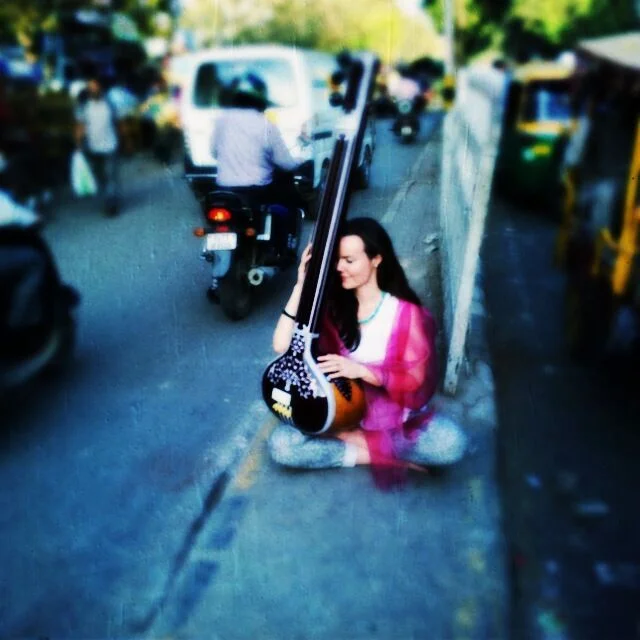Embodied Leadership: How To Use The Body To Take Inspired Action Toward What You Care About
By Rachel Nichols
For just a moment, I’d like you to think about something that you really care about—something that really matters to you. Now, take a moment to think about what your relationship to that thing you care about is like. How does your body feel when you think about it?
While most of us have any easy time thinking about the things we care about, few of us actually access the body to feel into what we care about. That is, in part, because we place a huge emphasis on developing the mind and critical thinking in our culture; and as a result, feeling our bodies and tapping into our felt sense has been pruned out of most of us, according to Richard Strozzi, founder of Strozzi Institute. They are the original architects of embodied leadership; an approach based on neuroscience that integrates mindfulness, martial arts, action-oriented communication and other holistic practices.
Feeling into the wisdom of the body and becoming aware of the way we use our bodies to lead our lives can be very telling if we pay attention. So now, for a moment, I’d like you to feel into what you care about. Just notice what you feel (or don’t feel). And not just your feelings, moods and emotions, but also notice any physical sensations, including tension, your breathing patterns and any contractions or openings you may feel in the body.
While I am accustomed to tuning into my sensations while on the yoga mat, I had never paid much attention to how what I care about lives and feels in my body until I went through a four-day Embodied Leadership training at Oakland-based Strozzi Institute. The experience was both enlightening and one of the most challenging things I have ever done.
We Are All Leading Every Day: How Are You Leading Your Life?
Whether it’s a corporate team, your family or your own life, we are all leading every day; so Strozzi’s Embodied Leadership training can benefit absolutely anyone and everyone. Embodiment is when our actions consistently reflect our values and commitment, especially under pressure. It’s designed to help us align with our vision and stay centered in our commitments—either personal or professional.
What I loved the most about this training is that rather than learning by listening and intellectualizing new ideas and strategies, we learned by the way of accessing the wisdom of the body through somatic (body-based) and holistic practices, action-oriented communication and mindfulness, to transform the way we live and lead.
If we want to implement change in our lives, using the body is the fastest way to get there. According to our teachers, thinking our way into something new is actually 300 times slower than using our body’s intelligence to take inspired action toward what matters most to us. The problem is, we have been trained out of listening to our bodies.
So to get us tapped back into the body and our felt sense during our four days, we engaged in a series of practices that helped us first identity our current shape formed by our conditioned tendencies. Our conditioned tendencies are the sum total of our life experiences embodied in our tissues and muscle. It is the automatic thinking, feeling, mood, action or non action, beliefs, muscular contractions and ways of relating that our somas (body) produce when we find ourselves facing life’s pressures.
One of the things that we learned right away that I found so fascinating is that our bodies are constantly revealing a story about us with each and every move that we make. For example, when you find yourself under pressure, do you tend to move: toward others for safety or to appease; away from others, fading into the background for safety; or against others, fighting for safety. Strozzi would call these our conditioned tendencies, habitual actions that we learned in the past, which show up in our body’s soma, or shape, and they can be changed.
We are always practicing something—either intentionally or unintentionally, so gaining awareness around our current practices, body shape and conditioned tendencies is the first step in beginning to change them. With that, we all observed in ourselves: What is the shape I learned to take? Will this shape get me what I care about?
Set a Declaration: What Do You Actually Care About?
Strozzi believes that setting a declaration helps us put our intention and attention in a direction that we most care about. It’s a commitment to a future possibility. Who do you want to be? How do you want to show up to this day? To this lifetime? A declaration is more than a goal. It’s what makes you feel vital and alive.
“Let your body be the tuning fork,” our teacher Nathan told us. “Does this commitment motivate you? Does it animate your aliveness and does it leave you a little excited and also a little nervous or unsettled? Keep feeling for that.”
We each had time to come up with our declarations, then edited and refined them over the four days of training. All declarations are commitments and we were asked to formulate them as such: I am a commitment to [insert commitment here]. Some examples of declarations include: I am a commitment to living and leading with vulnerability, courage and bravery; I am a commitment to trusting my capacity to enter into transition with courage; I am a commitment to welcoming more abundance into my life.
The one I ended up with in the end was: I am a commitment to allowing my comfort zone to expand. Notice that I am not forcing myself out of my comfort zone—when we push against resistance, we get pushed back. But by allowing the comfort zone to expand, I am increasing my capacity to handle what may have historically overwhelmed me, which feels way more accessible in my body.
Practice: Centering + Learning About What Grabs You
It’s through new action and practices that we fulfill our declarations, so next, we must learn new practices to help us begin to embody what we really care about. New practices can help train us to be with change with a sense of purpose—we gain more awareness, which gives us more choice so that we are able to handle the same old pressures from a more resourced place.
Our body patterns, or conditioned tendencies, show us very quickly where we are in alignment with our words and actions and where we are not. This Embodied Leadership training helped us determine if what we are currently embodying—we are all embodying something—is in alignment with what we care about and what we want to get out of our lives.
To get to know our bodies better and learn about the way we lead, we were led through a series of somatic, body-based practices over four days. The goal of the training is to leave with a different felt experience and take-home practices that will lead to a different physical somatic shape, than you walked in with—a new somatic shape that embodies what we care about.
Two foundational somatic practices we learned and practiced all weekend included Centering—coming into a place of relaxed aliveness; and Jo Kata—martial arts practice that develops flexibility, strength and a centered presence. The Jo practice is an extension of our commitment and helps us practice creating a new shape.
We also engaged in practices that invoked our tendencies to either move away, toward or against others. This practice gave us the opportunity to learn about and plan for our reactions when we find ourselves under pressure. These practices create a disruption in our old identity to make way for the new versions of ourselves that feel more true to who we are and what we want out of life. They help us come back to center, connect to what we care about and stay centered after life grabs us. We learn to stay connected to ourselves (and others) while also holding onto our dignity.
How I Learned To Keep Both Feet On The Ground
Our teachers and peers in the training helped each of us identify our conditioned tendencies by giving assessments after observing how we moved through the new practices we learned. The assessment that I received over and over again over the course of the four days was that my feet leave the ground. How that relates to my soma: When under pressure, I have a hard time staying grounded, especially when it comes to making an impact. One of my teachers asked me to reflect on how it feels for me to make an impact. Am I afraid to do so? How might it feel to stand in my personal power firmly?
Noticing when my feet lift off the ground and then taking action to stop, center in my body and plant both feet firmly on the ground before moving forward toward what I care about is my new practice. Two months later, I can confidently say that implementing this new practice into my life is shifting me from the inside out. Several times a day I notice myself coming up out of my feet, especially when I am feeling stress from life’s pressures. Everytime I notice, I take a breath, center myself and plant both feet on the ground and really feel into my body. Once I plant my feet on the ground, I can feel my whole shape shift. My heart rate will begin to slow, my higher brain comes back online, and I am no longer operating from a more stressed fight/flight/freeze state.
Our teachers told us that 300 reps of a new practice ground it in our muscle memory; and 3,000 reps transforms the muscle memory into a new embodied default. We can practice our way into a future that we can’t currently realize. So instead of lifting up out of my feet when I get overwhelmed from life’s pressures, after practicing a minimum of 3,000 reps of this new somatic, body-based practice, it will become my second nature to ground down in my feet and move from my center, from my dignity, toward what I care about.
It really amazed me how much our bodies could reveal so much about us. And how changing our old shape really can then change how we show up and lead our lives. As I begin to live into my declaration, I have found that my relationships and environment has started to shift as I embody my new practices and step outside of my old shape. I can expand my comfort zone so that I have more capacity to experience more adventure, joy and fulfillment while I am here on this earth. I can live into my own gifts and not feel afraid to make an impact, creating a more meaningful life for myself, where I feel truly alive. A truly priceless gift.
If you want to discover how to produce sustained change, reliably, check out Strozzi Institute’s methodology by attending one of their programs at https://strozziinstitute.com/course-offerings/.









